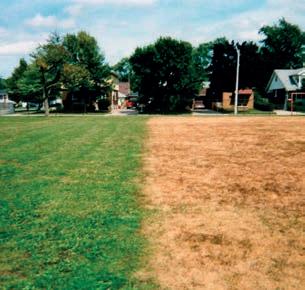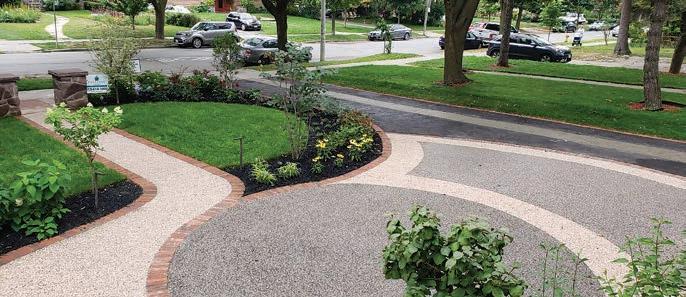H
ISTORY OF PAVERS
Looking back on the evolution of hardscaping in Canada BY JORDAN WHITEHOUSE
IN THE EARLY 1970S, a young man named Ed Bryant was building a ski chalet in Horseshoe Val-
ley, Ont., when he hired a Swiss stonemason to construct a fireplace. At one point, the stonemason showed Bryant a brochure from his father’s company in Zurich which sold paving stones. Bryant was impressed, having never really seen anything like them in North America. “This is a heck of a system,” said Bryant. “How much would it cost to put this in my driveway?” “It doesn’t matter,” the stonemason replied. “You can’t buy it here. I came over here to install paving stones, but nobody in North America makes them.” Bryant smelled an opportunity, and soon he travelled to Zurich to meet the stonemason’s father. Long story short, Bryant convinced the patent holder to grant him a licence to produce UNI-Stone in Ontario and he bought a machine that could produce 14 stones at a time. By 1972, Bryant had set up a company in Barrie, Ont., that would eventually be called Unilock. The first permanent concrete paver manufacturing factory in North America was born. “I pictured us paving all of Ontario with paving stones,” remembered Bryant years later. It was a bold dream, but it wasn’t without precedent. After the Second World War, Holland began a massive reconstruction effort that replaced many streets with concrete paving stones. By the 1960s, German manufacturers developed efficient paving stone machines and were selling an estimated 10 square feet of paving stone per capita. And today, while Ontario might not be entirely covered in paving stones, pavers have certainly become ubiquitous across the province, not to mention the country and the world. Some estimates suggest 1,000 pavers are now made every second on the planet. In 2020, the Interlocking Concrete Pavement Institute (ICPI) reported there were over 100 manufacturing companies in Canada and the U.S. Bryant passed away on Jan. 28, 2021, at the age of 85 at his home in Horseshoe Valley. But as Landscape Ontario Executive Director Tony DiGiovanni put it recently, Bryant’s legacy lives on. “How many thousands of people have been positively affected by the gardens and landscapes that were built with elements that Ed first brought to North America,” DiGiovanni asked. “How many businesses and careers were propelled forward? How many other companies were elevated? How many people were inspired by his dreams, attitudes, energy, and actions?” 6 | MAY 2021 | LANDSCAPE TRADES









